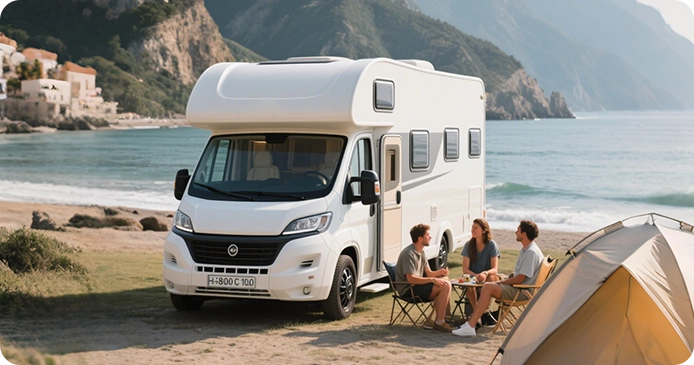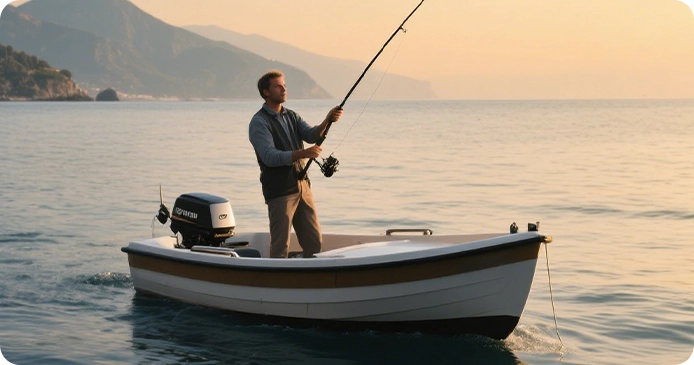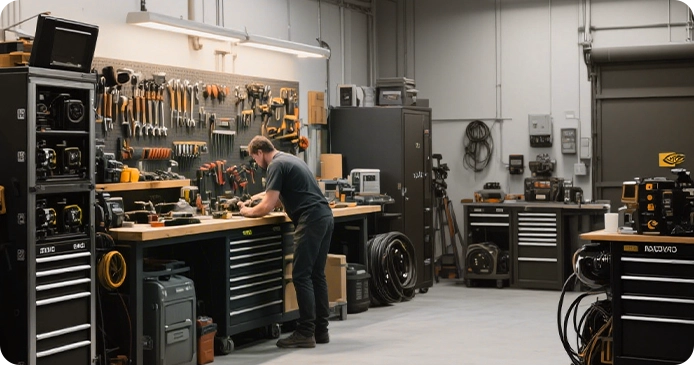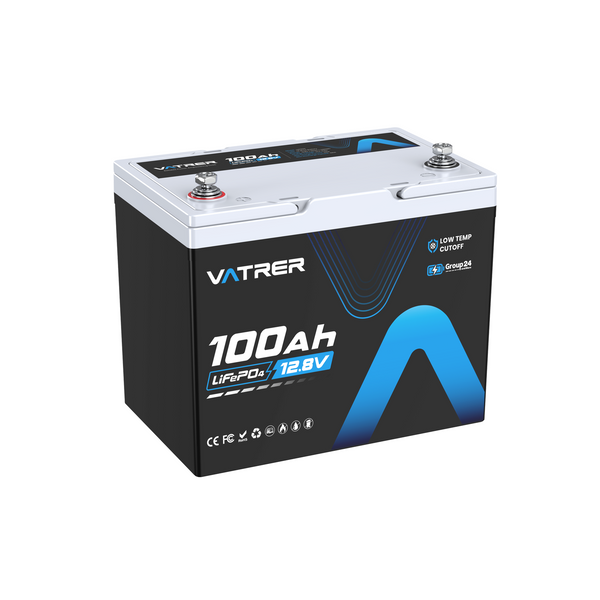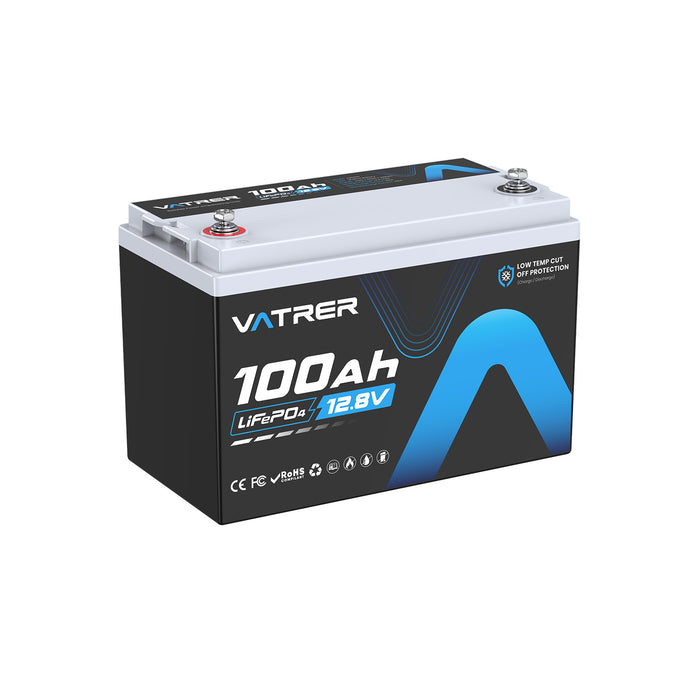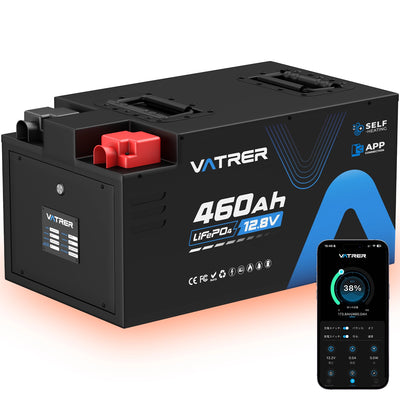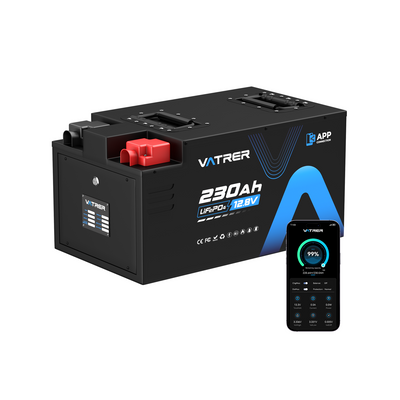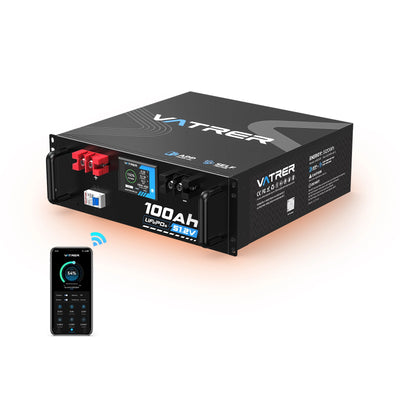
立ち往生しないで!船長のための船舶用バッテリーサイズとサバイバル戦術のチートシート
さあ、ボート仲間の皆さん、手遅れになるまで見落とされがちな重要なもの、 マリンバッテリーについてお話しましょう。適切なバッテリーを選ぶということは、単に「ぴったり合う」ものを選ぶことではありません。エンジンをかけ、電子機器を動かし、安全にドックに戻るための電力を確保することが大切です。間違ったバッテリーを選ぶと、水上でイライラする一日を過ごすことになるだけでなく、最悪の場合、危険な状況に陥ることになります。
今回は、マリンバッテリーのグループサイズを詳しく説明し、適切なバッテリー選びが不可欠である理由を説明し、パワーソースを最適な状態に保つためのプロのヒントをご紹介します。さらに、次回のバッテリー購入をスムーズにするための便利なサイズ表もご紹介します。

明確にすべき重要な点
- 物理的な適合性はほんの始まりに過ぎません:マリンバッテリーのグループサイズは、主にバッテリーの物理的な寸法を示します。しかし、真の成功は、ボートの特定のニーズを満たす十分な蓄電量(アンペア時間)と始動力(クランキングアンペア)を備えたバッテリーを見つけることです。
- グループを理解する: Battery Council International (BCI) のグループ サイズを理解すると、パフォーマンス、容量、始動能力が最適化されたバッテリーを選択するのに役立ちます。
- グループが大きいほど、一般的にパワーアップ:通常、グループのサイズが大きいほど、バッテリーの物理的サイズも大きくなり、旧式の鉛蓄電池であれ、最新のリチウムであれ、容量も大きくなります。
- メンテナンスの重要性:定期的な点検と適切な手入れが、信頼性の高い電力と長持ちするバッテリーを得るための最善策です。
船舶用バッテリーグループのサイズを理解する
1920年代、国際バッテリー評議会(BCI)がバッテリーサイズの標準化に着手しました。これは画期的な出来事で、ボート乗り(そしてもちろん車のオーナーも)が交換用バッテリーを購入する際に、同等のバッテリーを比較検討できるようになりました。
BCIグループサイズは、バッテリーの寸法(長さ、幅、高さ)を表す世界共通の言語と考えてください。これは非常に重要です。なぜなら、ボートは特定のバッテリートレイまたはコンパートメントを備えて設計されているからです。
- 大型リグ、大容量:大量の電子機器や強力なエンジンを搭載した大型船舶には、当然、より長時間にわたってより多くの電力を供給できる大容量のバッテリーが必要になります。
- より小型の船舶、よりシンプルなニーズ:ジョン ボートや小型のランナバウトでは、より小型で軽量のバッテリー グループで十分対応できる可能性があります。
グループ番号の後に「M」が付いていることがよくあります(例:グループ24M)。この「M」は、船舶での使用に耐える頑丈さを備え、水上での生活における振動や過酷な条件にも耐えられることを意味します。
最も一般的な船舶用バッテリーグループのサイズ
- グループ 24:小型ボートの人気の出発点。
- グループ 27:グループ 24 よりサイズと容量が大きくなりました。
- グループ31:特にトローリングモーターを搭載した漁船でよく使われるサイズで、始動性とディープサイクル性のバランスに優れています。(完全開示:当社の12Vグループシリーズリチウムバッテリーは、グループ31およびグループ24の代替品として設計されており、アップグレードが容易です。)
- グループ8D:これらは大型のものです。重量があり、パワフルで、大型ヨットや商用船舶によく搭載されています。
グループのサイズを気にする必要があるのはなぜですか?
答えは簡単です。ボートの電気系統とエンジンはバッテリーに依存しているからです。スターターバッテリーやデュアルパーパスバッテリーの場合、グループサイズは始動電流(エンジンを始動させる電力)と予備容量(エンジン停止時に必要な機器を稼働させる時間)と相関関係にあることが多いです。
適切なグループ サイズを取得するということは、次のことを意味します。
- 大まかな変更を加えることなく、物理的にバッテリー トレイに収まります。
- 確実に始動できる十分な始動力が得られます。
- 車載電子機器用の十分な予備容量があります。
プロからのヒント:リチウムマリンバッテリー(当社のマリン・トローリングモーターシリーズなど)にアップグレードすると、同じグループサイズの鉛蓄電池と比較して、使用可能な容量が2倍になることがよくあります。これは、リチウムバッテリーは損傷を与えることなく、より深く安全に放電できるためです。
船舶用バッテリーのサイズ表:クイックリファレンス
この表は、一般的なBCIグループサイズの標準的な寸法を示しています。ご購入前にバッテリートレイのサイズを測ってください。
| BCIグループ番号 | ミリメートル | インチ | ||||
| L | W | H | L | W | H | |
| 24 | 260 | 173 | 225 | 10 1/4 | 6 13/16 | 8 7/8 |
| 27 | 306 | 173 | 225 | 12 1/16 | 6 13/16 | 8 7/8 |
| 31 | 330 | 173 | 240 | 13 | 6 13/16 | 9 7/16 |
| 8D | 527 | 283 | 250 | 20 3/4 | 11 1/8 | 9 13/16 |
ボートに最適なマリンバッテリーの選び方:サイズだけではない
ボートメーカーがバッテリートレイのサイズを選んだのには理由があります。大きすぎたり小さすぎたりするバッテリーを無理やり押し込むと、トラブルの原因になります。ですから、ドロップインフィットに適したグループサイズに合わせることが最優先事項です。
しかし、さらに深く掘り下げる必要があります。
-
ボートの電力ニーズを評価する:
- エンジン始動:お使いのエンジンのコールドクランキングアンペア(CCA)またはマリンクランキングアンペア(MCA)の要件は何ですか?エンジンのマニュアルをご確認ください。
-
家屋の負荷/補助電源:すべての電子機器(魚群探知機、GPS、照明、ステレオ、ライブウェルポンプなど)をリストアップし、それらを何時間稼働させるかを推定します。これにより、必要なアンペア時間(Ah)を算出できます。
-
Power (Watts) = Voltage (Volts) x Current (Amps) -
Energy (Watt-hours) = Power (Watts) x Time (Hours)
-
- トローリング モーター:これらには特定の電圧 (12V、24V、または 36V) と連続的な電力消費が必要です。
- リチウムに関するプロのヒント:深放電(トローリングモーターを一日中稼働させるなど)のシナリオでは、リチウムバッテリーが最適です。鉛蓄電池ではバッテリー寿命を延ばすために通常50%程度しか使用しないのに対し、リチウムバッテリーは定格容量のほぼ100%を使用できます。
-
バッテリー容量(Ah)と電圧(V)を一致させる:
- 容量:バッテリーのアンペア時間定格が、計算した必要量を満たすか、それを超えていることを確認してください。容量が大きいほど安全マージンが確保できるため、多くの場合、より良い結果が得られます。グループ31リチウム電池は、グループ31鉛蓄電池よりも一般的に使用可能な容量が大きいことを覚えておいてください。
- 電圧:ほとんどのボートは12Vシステムで動作します。ただし、トローリングモーターは例外となることがよくあります。
船舶用バッテリーを最高の状態に保つ
バッテリーを長持ちさせたいですか?従来の液式鉛蓄電池でも、最新のリチウム電池でも、適切なメンテナンスが鍵となります。
-
充電と保管の知識:
- 必ず、バッテリーの種類に合わせて設計された充電器を使用してください (鉛蓄電池、AGM、ゲル、リチウムにはそれぞれ異なる充電プロファイルがあります)。
- 製造元の充電推奨事項に従ってください。
- 特に保管する前に、バッテリーを完全に充電しておいてください。
- 電池は涼しく乾燥した場所に保管してください。高温は電池の寿命を縮める可能性があります。
-
定期検査:
- 鉛蓄電池の場合:端子の腐食(白っぽい堆積物)がないか定期的に確認してください。ワイヤーブラシと重曹水で汚れを落としてください。接続部がしっかりと固定されていることを確認してください。密閉型でない場合は、電解液の量を確認し、必要に応じて蒸留水を補充してください。
- リチウム電池の場合:大きなメリットの一つは、実質的にメンテナンスフリーであることです。腐食の心配もなく、液漏れの点検も必要ありません。また、自己放電率も非常に低いため、保管中でも数ヶ月間は充電状態を維持できます。
- 種類に関係なく、バッテリーの上部を清潔で乾燥した状態に保ってください。
結論
マリンバッテリーのグループサイズを理解することは、ボートに必要な電力を安定的に供給するための第一歩です。しかし、重要なのは物理的な寸法だけではありません。バッテリーの電気性能(始動力と容量)を、船舶固有の要件に適合させることも重要です。リチウムなどの最新技術の利点も考慮すれば、水上での時間を飛躍的に向上させることができます。
適切な選択と入念なメンテナンスにより、頭痛が減り、より楽しく、心配のないボート遊びができるようになります。
電源設備の計画でお困りですか?当社のチームがいつでもお手伝いいたします。+1 (660) 260-0222までお電話いただければ、すぐに対応させていただきます!
当社のグループ24およびグループ31サイズの製品:
よくある質問(FAQ):
-
船舶用バッテリーには、一体どんなサイズがあるのでしょうか?物理的な寸法を基準にグループサイズを議論するのに対し、電気的な「サイズ」は電圧と容量を基準としています。ほとんどの船舶は12ボルトのバッテリーを使用しています。大型船やトローリングモーターの需要が高い船舶では、24ボルトまたは36ボルトのシステムを使用する場合もあります。これは、複数の12Vバッテリーを連結するか、専用の高電圧バッテリーを使用することで実現されます。同じグループサイズでも、容量(アンペア時間)はバッテリーの化学組成や構造によって大きく異なります。
-
グループ24とグループ27のマリンバッテリーの本当の違いは何でしょうか?それは主に、物理的なサイズと潜在的な容量です。グループ27バッテリーはグループ24バッテリーよりも物理的に大きいです。ケースが大きいため、グループ27は通常、より高いアンペア時間(Ah)定格を備えており、同じ化学組成のグループ24バッテリーと比較して、より長時間電力を供給できます。そのため、グループ27は、より長い耐久性が求められる用途に適しています。バッテリーラベルに記載されている具体的なAh定格を必ずご確認ください。
-
グループ31のバッテリーはすべて同じですか?いいえ!物理的寸法は同じですが、グループ31鉛蓄電池は、グループ31 AGMバッテリーやグループ31リチウムバッテリーとは性能特性(使用可能容量、サイクル寿命、重量)が異なります。例えばリチウムバッテリーは、グループ31の同じフットプリントで、使用可能アンペア時間が大幅に長く、寿命もはるかに長くなります。


























